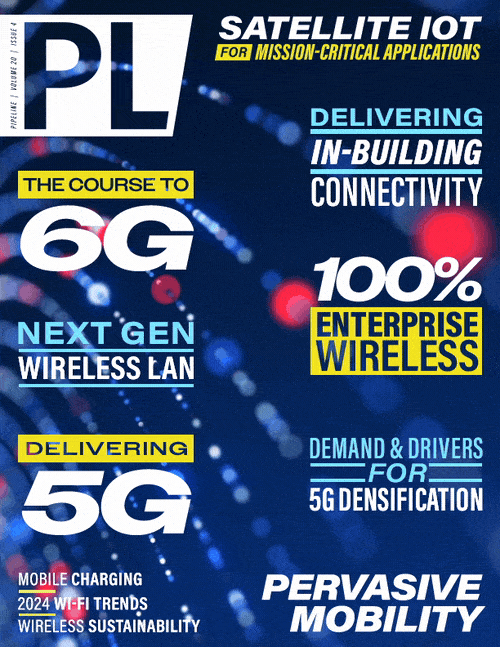Wi-Fi Trends for 2024 and Beyond
AFC Will Help Address Rural Connectivey Challenges
We expect 6GHz low-power indoor (LP) devices with an average transmit power of 24 dBm to proliferate quickly for indoor applications such as residential mesh, indoor public venues, and high-density enterprise networks. We also expect 6GHz very low-power indoor (VPI) devices with 14 dBm maximum transmit power to be quickly adopted for short-range indoor applications such as AR, VR, XR, streaming, and gaming. These device classes do not require Automated Frequency Coordination (AFC) coordination with the incumbents.
For standard power device classes with a maximum transmit power of 30 dBm, the road to adoption will be slower because there is much to be done on the technology side for the solution to mature and stabilize all the advanced features and mechanisms that will ensure the lowest possible interference with both incumbents and new users, especially in dense environments. Outdoor AFC will initially be successful in rural connectivity in countries that have opened large portions of the 6GHz to Wi-Fi.
AI and ML Find Their Role in Networking
The emerging role of artificial intelligence (AI) and machine learning (ML) cannot be overstated. Adaptive AI usage will explode from enabling AFC coordination to predicting network resources. WLAN vendors are developing their secret sauce versions of AI to differentiate themselves in an environment where the hardware is fully standardized. AI will help enterprises and ISPs speed up troubleshooting, streamline monitoring, and proactively anticipate outages, equipment failures, and performance degradation. In the AFC context, AI will manage radio resources, manage power from the devices and the infrastructure, and perform cross-network coordination to maximize frequency re-use and, thus, capacity.
Wi-Fi and 5G/6G Convergence
Convergence is progressing toward enabling access to private or public 5G services over Wi-Fi. Full convergence requires standardization and a common core network which will only develop in incremental steps. Building a common core simplifies the network architecture and reduces the operational cost with function re-use. In the meantime, interworking between the access systems for realizing IP address preservation across inter-access handovers can be realized in simpler terms by collocating 5G core network elements with WLAN controllers and can be the preferred option for most deployments with existing Wi-Fi footprints.
Rather than competing with 5G over emerging high-performance use cases, the Wi-Fi community continues to work on coexistence with 5G, especially around identity management, authentication, and policy management. This suggests that large enterprises are already deploying private 5G because they want synergy with Wi-Fi.
We expect network executives will continue deploying Wi-Fi and cellular in the coming years, with Wi-Fi 6 or 6E for indoor, on-campus, and fixed network situations and 5G cellular for outdoor, off-campus, and mobile environments. Wi-Fi 7 may not sufficiently close the gap with 5G enough to persuade some enterprises to select it for more demanding use cases. 5G is not standing still either with enhancements coming through the 3GPP (Third Generation Partnership Project) Release 17 under the banner of 5G Advanced.
The Dawn of New IoT Tech
A pain point for consumers has always been that smart home devices manufactured by different companies do not necessarily work together, which diminishes the home user’s experience with IoT devices. However, Matter— an industry-unifying standard launched in 2023 that provides reliable, secure connectivity across multiple device manufacturers—promises to change that. Matter is an open-source protocol that allows users to connect smart home devices and mobile apps from different manufacturers using Wi-Fi or Thread protocols and Bluetooth LE for easy commissioning.
Given the weight of players (e.g., Apple, Amazon, Google, Samsung SmartThings), we expect the adoption of Matter-certified products will be exponential in the next three years. This will again validate Wi-Fi’s central role in the smart connected home and building. Given the throughput, coverage, and latencies required, we expect HaLow to also make its way into the home, with security wireless cameras as one of the primary use cases in the near term.
Exciting Times for Wi-Fi Ahead
There has never been a more exciting time for Wi-Fi with technologies such as OpenRoaming more widely available than ever, addressing the challenges in areas including Guest Wi-Fi provision, IoT deployments, and private cellular networks. The Wireless Broadband Alliance is looking forward to working with the Wi-Fi ecosystem to develop industry trials for Wi-Fi 7 during 2024 across a range of use cases, and the work of the whole industry will see improved capabilities, simplified deployment, and new business benefits for enterprises as the innovation of Wi-Fi and its essential convergence with 5G for seamless, access-agnostic connectivity continues.



















